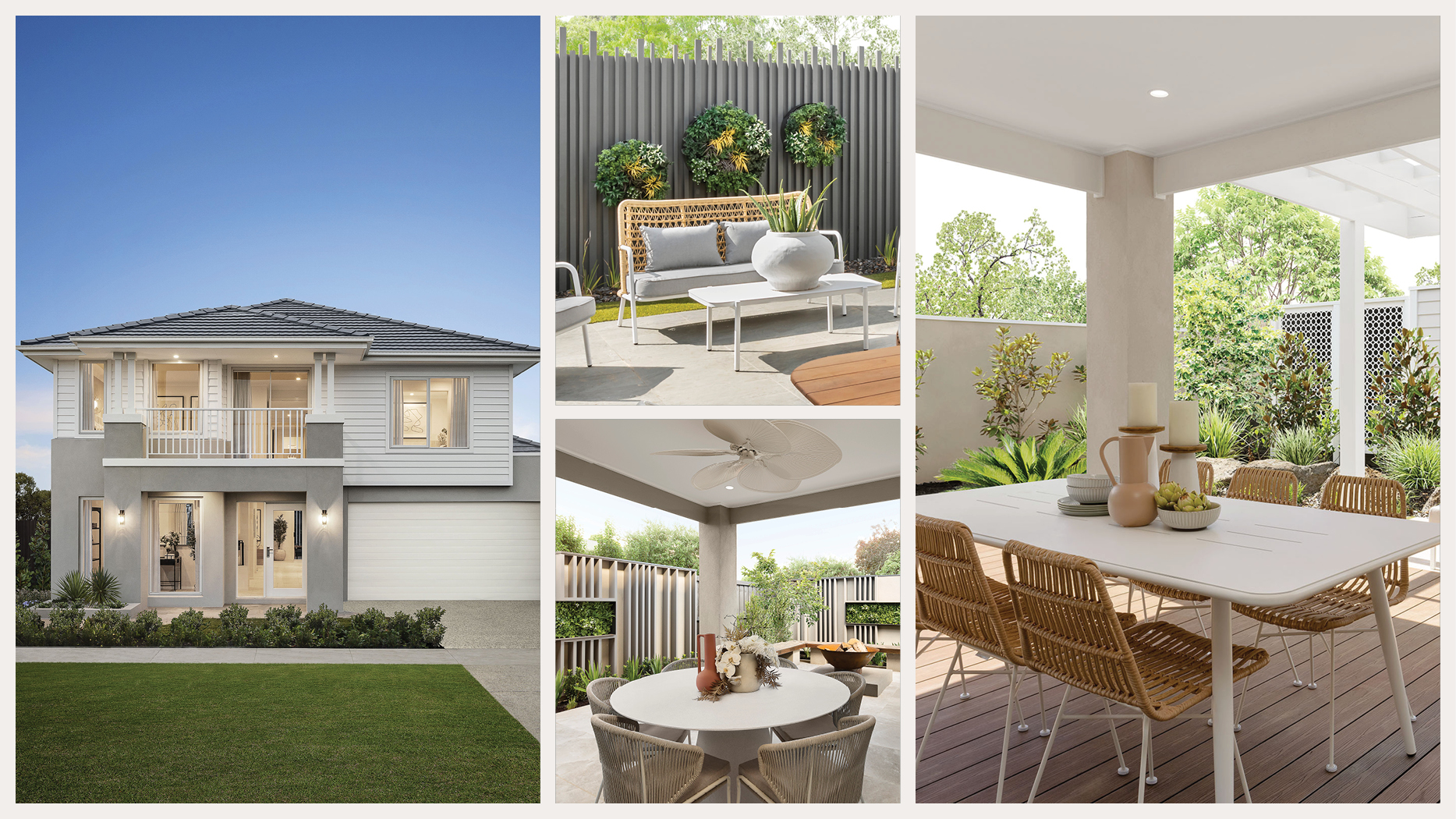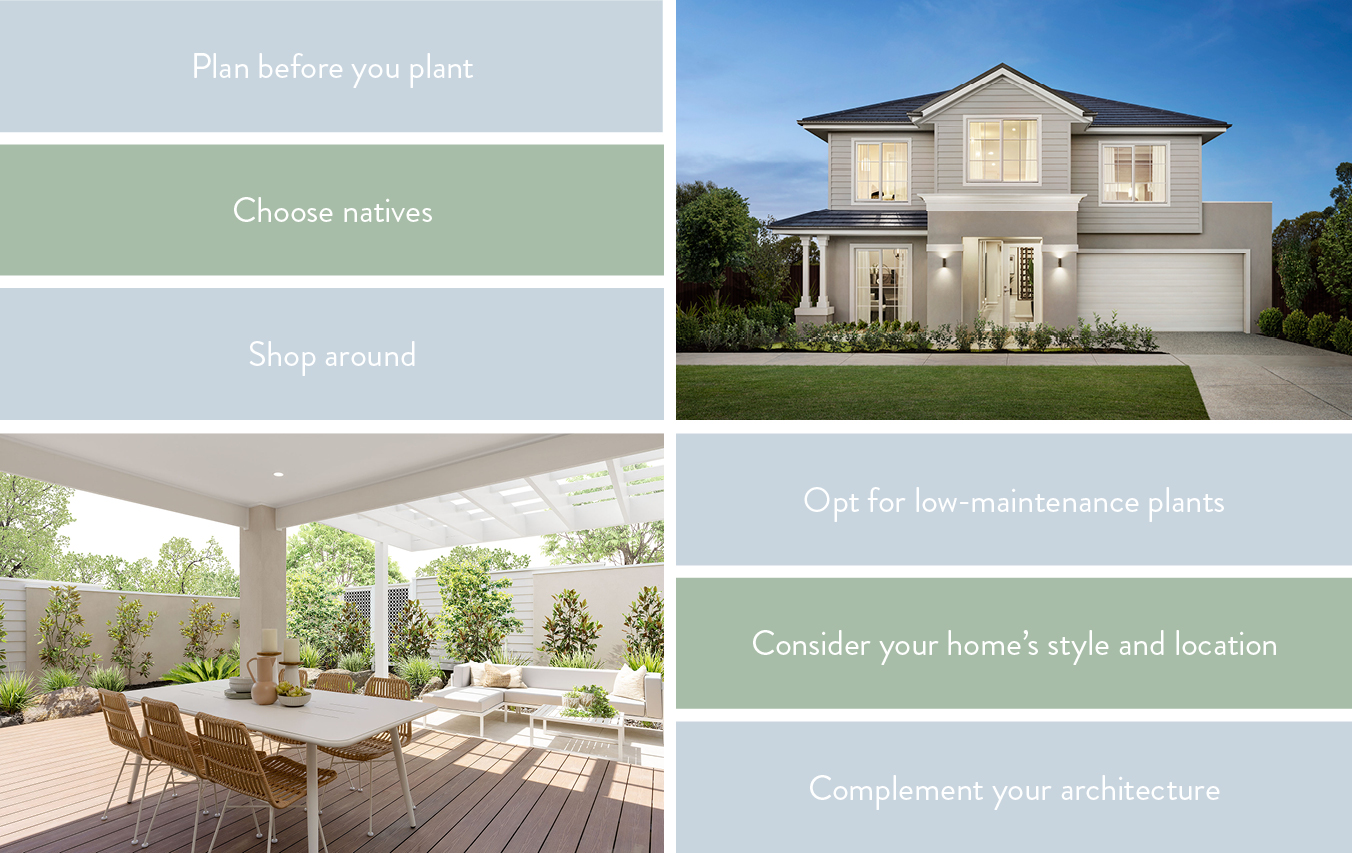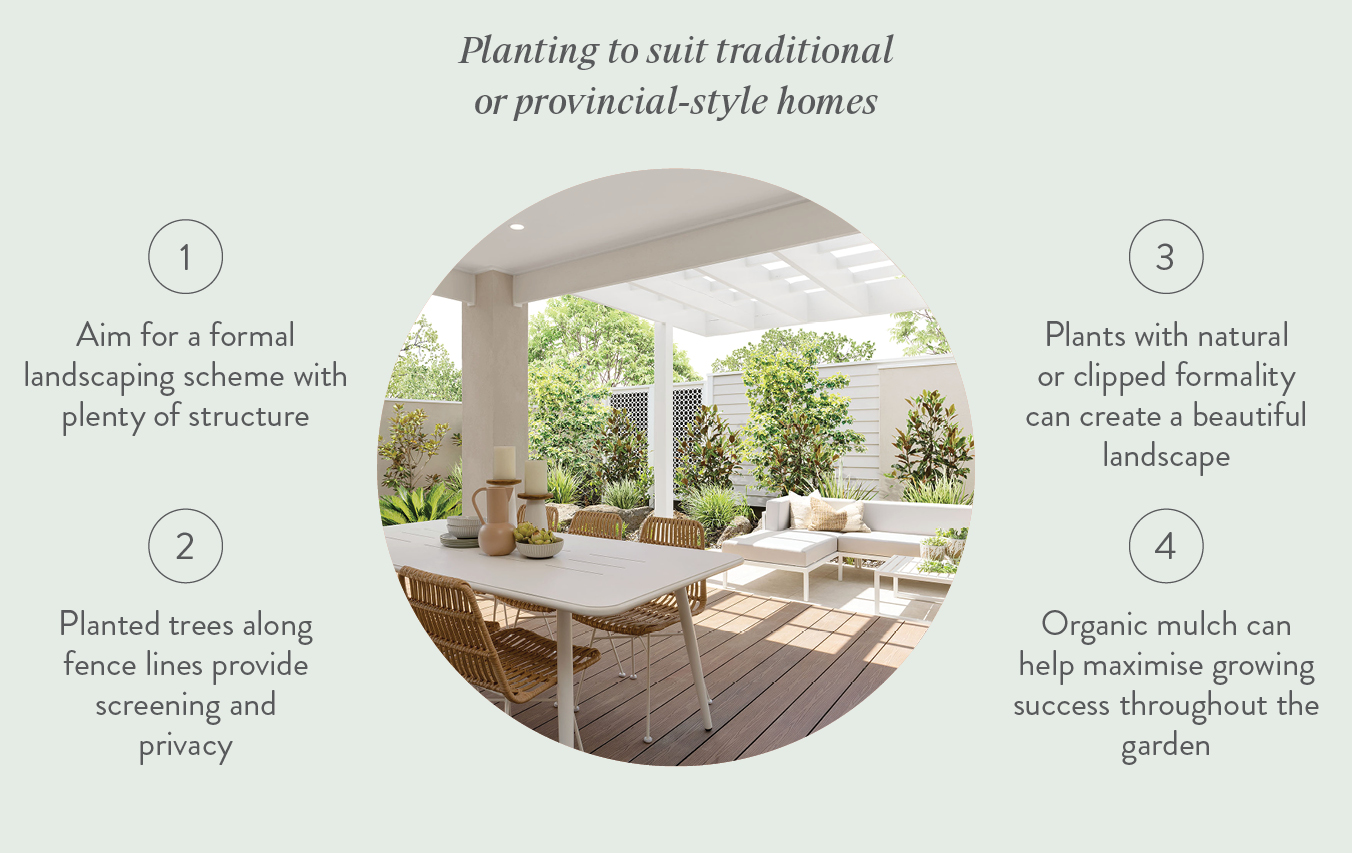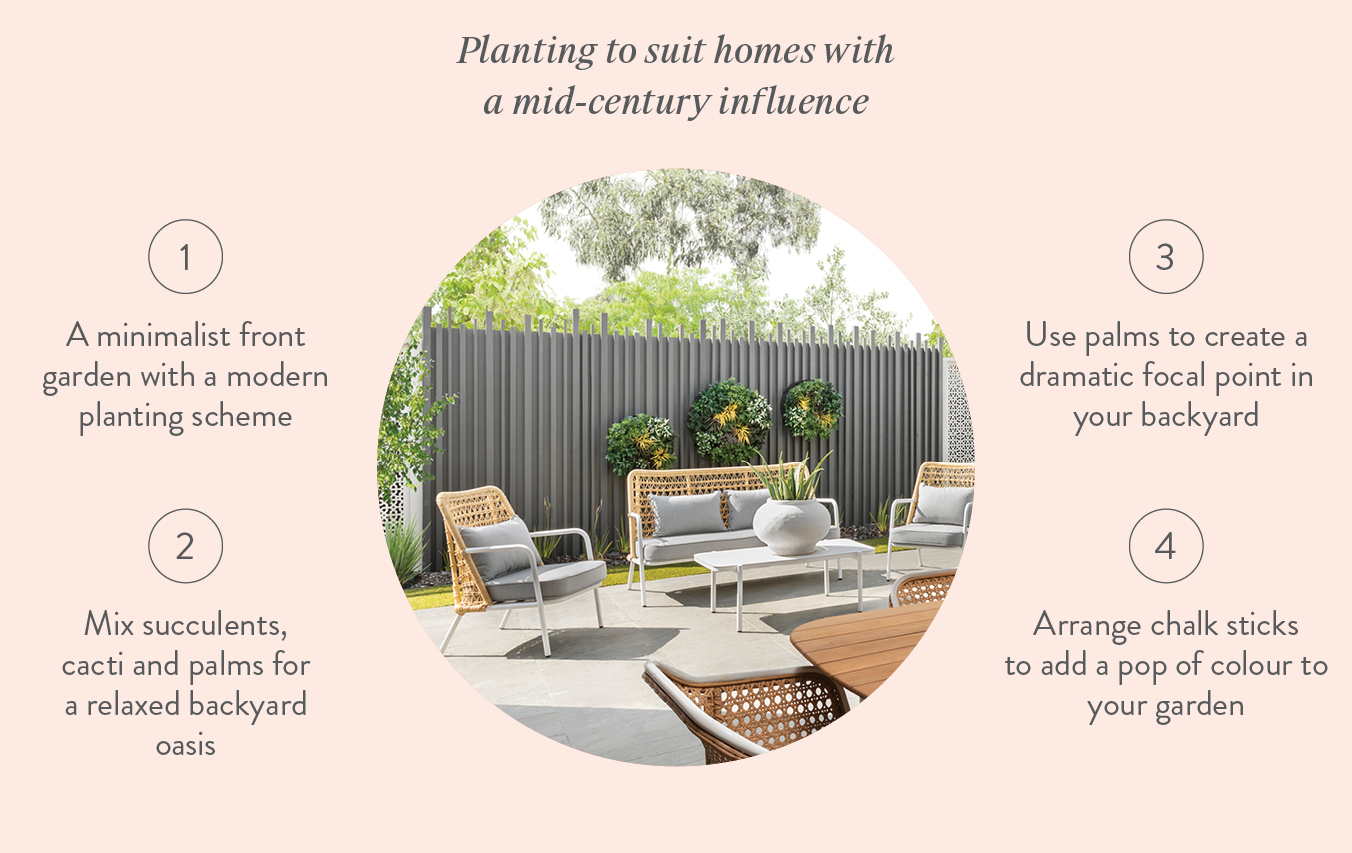How to Landscape Your Garden on a Budget
by Carlisle Homes

With a little planning and some smart planting choices, you can create a beautiful garden without spending the earth, says Carlisle’s landscape design expert.
It’s an all too familiar story. You’ve put all your focus and funds into building your beautiful new home, and it’s left your landscaping budget virtually non-existent. If that sounds like you, don’t panic. Mark Browning, landscape designer and principal at Mark Browning Landscape Design, who has designed over 500 stunning gardens in Carlisle display homes across Melbourne, shares his expert tips for creating a spectacular garden without breaking the bank.

Before planting, strategise your garden design. Choose plants that suit Melbourne’s climate, like hardy natives, and scout out good deals on affordably priced plants and supplies at your local garden store.
Plan before you plant
Before you start landscaping, take some time to plan out your garden design. Consider factors like sunlight exposure, soil type and water availability. By planning ahead, you can avoid costly mistakes and ensure your garden thrives.
Choose natives
Native Australian plants are low-maintenance, well-suited to our climate and soil conditions, and tend to be more affordable than exotic species. They are a great way to add colour and texture to your garden, while attracting native wildlife such as birds and butterflies.
Shop around
When buying plants and garden supplies, look around for good deals. Visit local nurseries, garden centres and online retailers to compare prices and find bargains. End-of-season sales and clearance events can be great places to score heavily discounted plants, garden tools and supplies.
Opt for low-maintenance plants
Choosing easy-care plants can save you time and money in the long run as they tend to be more forgiving if you skip the odd watering session and require less hands-on care. Look for plants that are drought-tolerant and require minimal pruning and fertilising, such as native grasses and ground covers.
Consider your home’s style and location
Selecting the right plants for your home’s climatic conditions plays a huge role in their cost and upkeep. You’ll want plants that not only look beautiful, but will cope with Melbourne’s typically hot summers, cool winters and rain.
Complement your architecture
“For a seamless look, you’ll also want your planting scheme to reflect the style of your home, and in particular your facade,” says Browning. Here are four high-impact, budget-friendly planting schemes that Browning recommends for some of Australia’s most popular architectural styles, which will work a treat with your new Carlisle home, depending on the facade you pick.

Crafting contemporary curb appeal? Try a layered planting scheme with native ground covers, strap leaf plants, and bold succulents. Choose low-maintenance, drought-tolerant plants for hassle-free upkeep and modern allure.
Planting to suit contemporary-style homes
“For contemporary homes, consider a layered planting scheme consisting of ground covers, strap leaf plants, shrubs, succulents, screening plants for privacy, and trees for shading and structural presence. Aim to give your front garden a pared-back, minimalist feel, while your rear garden can be more relaxed to reflect how your family uses the space,” he says.
“For contemporary homes, I like to use native plants that are either indigenous to the location or engineered to grow in similar conditions, and succulents with a bold form.
“Try a shrub such as white correa, paired with a strap leaf plant such as nyalla lomandras, and a succulent like a dragon tree. All these plants are low-maintenance, drought-tolerant once established, and easy for novice gardeners to grow. They all grow well in open, sunny positions in a range of soil types.
“I like to arrange the correas and lomandras in clumps of between five and seven, and use a dragon tree as a striking, stand-alone feature.
“To maximise growing success, mulch all garden areas with an organic mulch. For contemporary homes, you might also want to use gravel and stone mulches, which have a modern feel and will set off these plants beautifully, while keeping garden areas damp and cool,” he says.

For Hamptons-style facades, think lush greenery. Mix native and exotic plants for a symmetrical, formal front garden. Try Asiatic jasmine, snow maiden Indian hawthorns, and white crepe myrtles for a timeless, low-maintenance landscape.
Planting to suit Hamptons-style homes
“When it comes to landscaping, Hamptons-style homes call for a medley of rich green tones – for example, a mix of ground covers, strap leaf plants, shrubs, screening plants for privacy and trees for shading and structural presence. Design your front garden to be formal in form to match your home’s façade, with an emphasis on symmetry,” says Browning.
“I like to use a mix of native, exotic plants and features trees with deep green tones.
“When it comes to ground cover, I favour Asiatic jasmine, paired with shrubs such as snow maiden Indian hawthorns, and feature trees like white crepe myrtles. All are easy to grow, drought-tolerant once established, and require minimal maintenance.
“I like to arrange the Indian hawthorns in rows or clumps, the Asiatic jasmine as border plantings on the lawn and path edges, and the crepe myrtles as either one-off feature trees or, if space permits, avenue plantings. All these plants are exotics and grow well in open, sunny positions in a range of soil types. Use an organic mulch to enhance growing success,” he says.

Complement your traditional facade with a tailored planting scheme that incorporates classic favourites, like big blue liriopes, Miss Muffet pittosporums, and Miles Choice bay trees for a formal yet inviting look.
Planting to suit traditional or provincial-style homes
“Homes with a classic or provincial aesthetic call for a formal landscaping scheme with plenty of structure,” says Browning. “When landscaping traditional homes, I like to use a mix of native and exotic plants with some natural or clipped formality, plus features trees.
“My go-tos include strap leaf plants such as big blue liriopes, shrubs such as Miss Muffet pittosporums, and screening plants like Miles Choice bay trees. All these plants require some maintenance, such as pruning to shape them once or twice annually, and regular fertilising. Once established, they are fairly drought-tolerant, but will require extra watering in dry periods, making them a better pick for experienced gardeners.
“I like to arrange the liriopes in clumps en masse beneath shade-providing trees, the pittosporums in clumps of five to seven, with low plantings between and around them. I use the bay trees along fence lines for screening and privacy.
“All these plants are exotics and grow well in different soil types. The liriopes grow well in semi-shaded spots, while the pittosporums and bay trees do well in open, sunny positions. Use an organic mulch throughout the garden to maximise growing success,” he says.

For facades with a mid-century influence, capture the modernist, Palm Springs spirit by incorporating succulents, cacti, palms, and gravel or stone mulch in your front yard planting scheme.
Planting to suit homes with a mid-century influence
“For this home style, opt for a modern planting scheme with a strong emphasis on modernism. Your front gardens should be more minimalist form, while your backyard can be more relaxed,” says Browning.
“For this look, I like to use a mix of succulents, cacti and palms to mimic Palm Springs landscapes.
Ground covers I’d recommend include trident blue chalk sticks, a shrub-like cacti such as golden barrel cactus, and cabbage fan palms. All these plants are low-maintenance, extremely drought-tolerant once established, and easy for novice gardeners to grow – albeit the golden barrels are very thorny.
“I like to arrange the chalk sticks as border plants beside paths and the golden barrels in open garden areas, with the palms used as standalone features.
“Gravel and stone mulches will set off these plants beautifully, while keeping your garden moist and cool,” he says.
Three beautiful, budget-friendly plants to try
Hitting the garden centre sometime soon? Here are Browning’s top picks for hardy, beautiful and affordably priced plants, so keep an eye out!
- Yareena creeping boobialla: This native hybrid ground cover is specially engineered to suit our climate. It’s a great border plant that will spread to large areas, with foliage that ranges from green to purplish, and small white flowers that occur year-round.
- Plum gorgeous: This compact shrub has stunning burgundy-purple foliage and pink flowers. It grows to around 1.5 metres high and 2 metres side.
- Kingsdale tussock grass: This native grass is engineered to be smaller and tuftier than its parent, common tussock grass. I love the grey grassy fronds and summertime seed heads.
As for the plants to avoid, Browning says: “Bamboo, especially varieties with invasive root systems, and Yaccas, which can be a safety hazard with their thorny leaf tips. I’d also limit the number of tropical plants you use as they don’t cope well with our bitter winter winds.
And if in doubt, ask an expert. “To find out which plants will grow best in your home’s climate, seek the advice of a qualified landscape designer,” advises Browning.
Pop along to one (or more) of our display homes in Melbourne and see Browning’s stunning garden landscaping for yourself – it’s guaranteed to fuel your design thinking when it comes to your own front and backyard.
